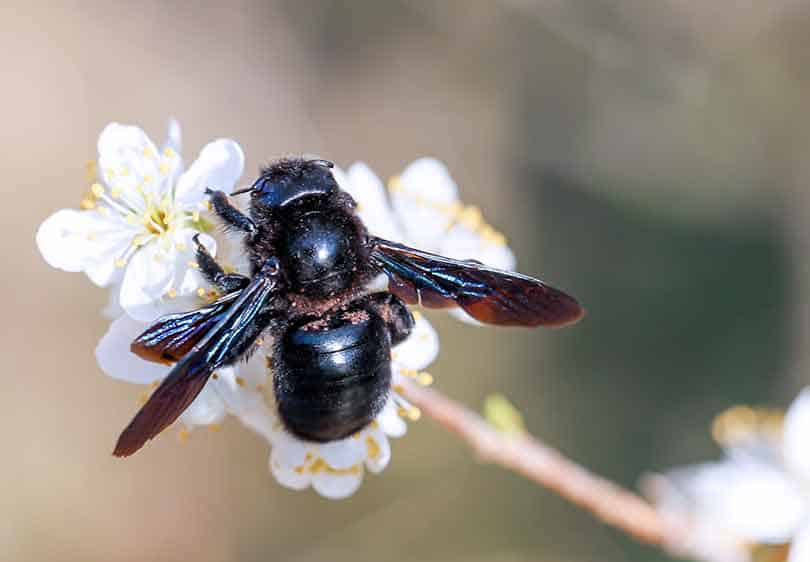Reliable Techniques for Vole Control Utah
Wiki Article
Reliable Parasite Control Solutions for Vole Infestations

In the realm of pest control, vole problems offer an one-of-a-kind difficulty that demands a tactical approach. By diving right into the complexities of vole behavior and exploring an array of control techniques, an extensive pest monitoring strategy tailored to these evasive creatures can be crafted. From natural repellents to cutting-edge capturing techniques, the collection versus vole infestations is multi-faceted.
Recognizing Vole Habits
Voles, small rats frequently found in yards and fields, exhibit distinct behavior patterns that are critical to recognize when executing parasite control procedures - vole control utah county. These creatures are respected diggers, producing a comprehensive network of tunnels underground where they nest, store food, and seek sanctuary from predators and harsh weather. Voles are herbivores and mostly feed on grasses, seeds, light bulbs, and origins, making fields and yards ideal habitats for themOne trick behavior of voles is their fast price of reproduction. Women can bring to life multiple trashes each year, with trash dimensions varying from three to six dogs. This high reproductive capacity allows vole populaces to promptly multiply, bring about infestations if left untreated.
Recognizing vole behavior likewise entails identifying their patterns of movement and foraging. Voles create surface paths in verdant locations as they take a trip between their burrows and food sources. By observing these runways and the places of burrow entryways, parasite control experts can identify high-traffic areas and tactically location catches or deterrents to properly take care of vole populations.
Natural Repellents and Deterrents
With an understanding of vole behavior as a structure, checking out natural repellents and deterrents becomes important in effectively taking care of vole problems in fields and gardens. In addition, including predator urine, such as that of foxes or prairie wolves, around the garden border can produce a natural obstacle that indicates danger to voles, encouraging them to remain away.Furthermore, making use of castor oil-based repellents can interrupt vole passages as they discover the smell and taste unpleasant, triggering them to relocate. Mulching with materials like crushed rock, lava rocks, or rugged sand can also prevent voles as they dislike digging via these rough materials. Executing a mix of these natural repellents and deterrents can assist effectively handle vole populations in a non-toxic and lasting fashion, safeguarding plants and yards from vole damage.
Trapping Methods for Voles

Break traps are designed to kill voles quickly upon activation. These traps must be placed in locations where voles are known to take a trip, such as near burrow entries or along their runways. It is crucial to inspect snap catches consistently and get rid of any caught voles promptly to make sure the effectiveness of the trapping procedure.
Live traps are a much more gentle option for those that wish to catch voles without damaging them. Once a vole is captured in a live trap, it can be securely transferred to a various location and released unhurt. Live catches ought to be inspected regularly to avoid anxiety or harm to the captured voles.
When establishing catches for voles, it is crucial to consider their habits and routines to increase the possibility of success (vole control utah county). By using the suitable capturing strategies, vole populaces can be effectively managed, minimizing the damages they create to farming and yard locations
Implementing Physical Barriers
To additionally fortify the defense against vole invasions, the calculated execution of physical obstacles arises as an aggressive action to safeguard agricultural and garden locations. Physical obstacles such as cord mesh, equipment towel, or fencings can be mounted below ground to protect against voles from delving right into yards or areas. Burying these barriers at least 12 to 18 inches deep and angling them outside can efficiently discourage voles from tunneling into the protected location. In addition, creating fencings with little mesh size at the base can hinder the voles' ability to access the plant life over ground degree.In addition, the usage of tree guards or trunk wraps made of steel or plastic can protect tree trunks from vole damages throughout winter months when various other food sources are scarce. These guards need to prolong above the anticipated snow line to avoid voles from gnawing on the bark. Regular assessment and maintenance of these obstacles are vital to ensure their proceeded efficiency in deterring vole invasions and safeguarding beneficial crops and plants.
Integrated Pest Administration Strategies
Integrating numerous pest control methods, including organic controls, environment adjustment, and monitoring, forms the basis of effective Integrated Bug Monitoring approaches for addressing vole infestations. Biological controls include introducing natural killers of voles, such as serpents or owls, to the damaged location to aid lower vole populaces.Verdict
Finally, reliable parasite control options for vole invasions include recognizing vole habits, utilizing natural repellents and deterrents, carrying out trapping methods, and establishing physical obstacles. Integrated bug administration strategies can additionally be used to address vole problems adequately. By combining these approaches, home owners can efficiently manage and mitigate vole populations without the need for extreme chemical usage.With an understanding of vole behavior as a structure, discovering all-natural repellents and deterrents ends up being necessary in properly managing vole invasions in areas and yards. Applying a mix of these natural repellents and deterrents can help effectively handle vole populations in a sustainable and safe manner, guarding crops and gardens from vole damage.
Incorporating various pest control techniques, including organic controls, environment adjustment, and tracking, develops the best vole pest control basis of efficient Integrated Insect Monitoring approaches for addressing vole problems. Biological controls involve presenting natural predators of voles, such as serpents or owls, to the damaged area to help reduce vole populations (vole control utah).In verdict, effective pest control options for vole invasions entail understanding vole actions, utilizing natural repellents and deterrents, applying trapping methods, and establishing up physical barriers
Report this wiki page